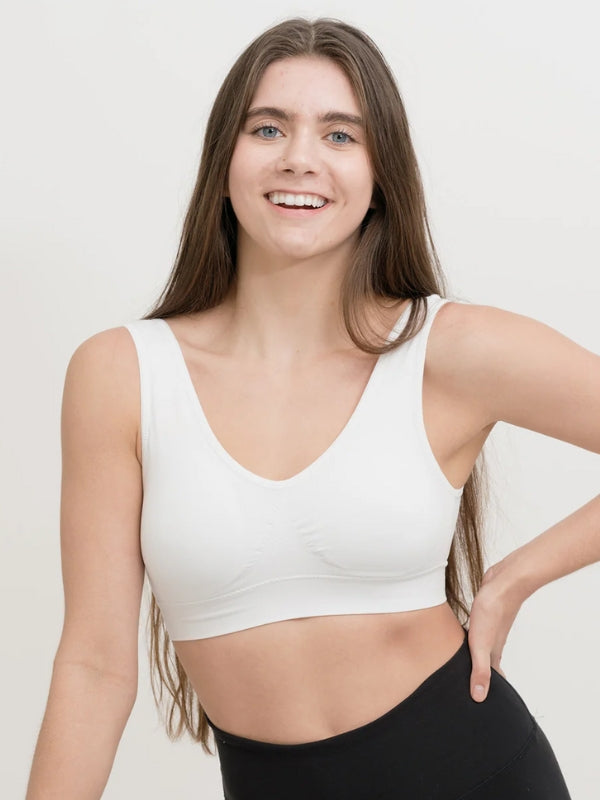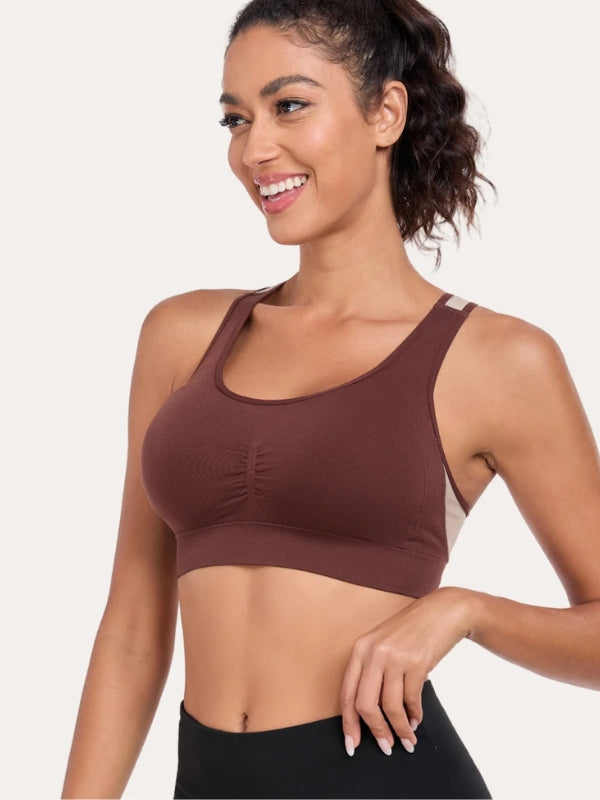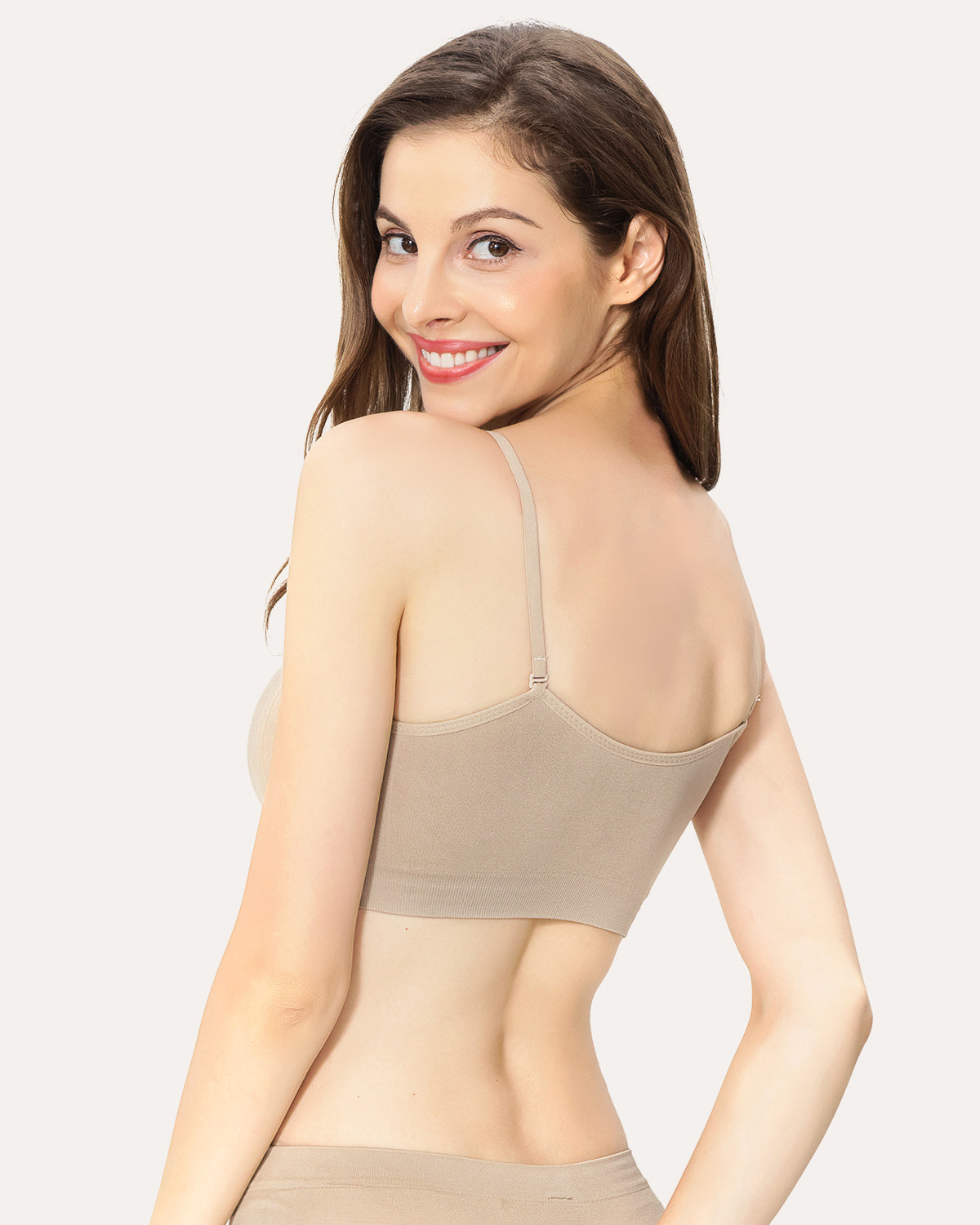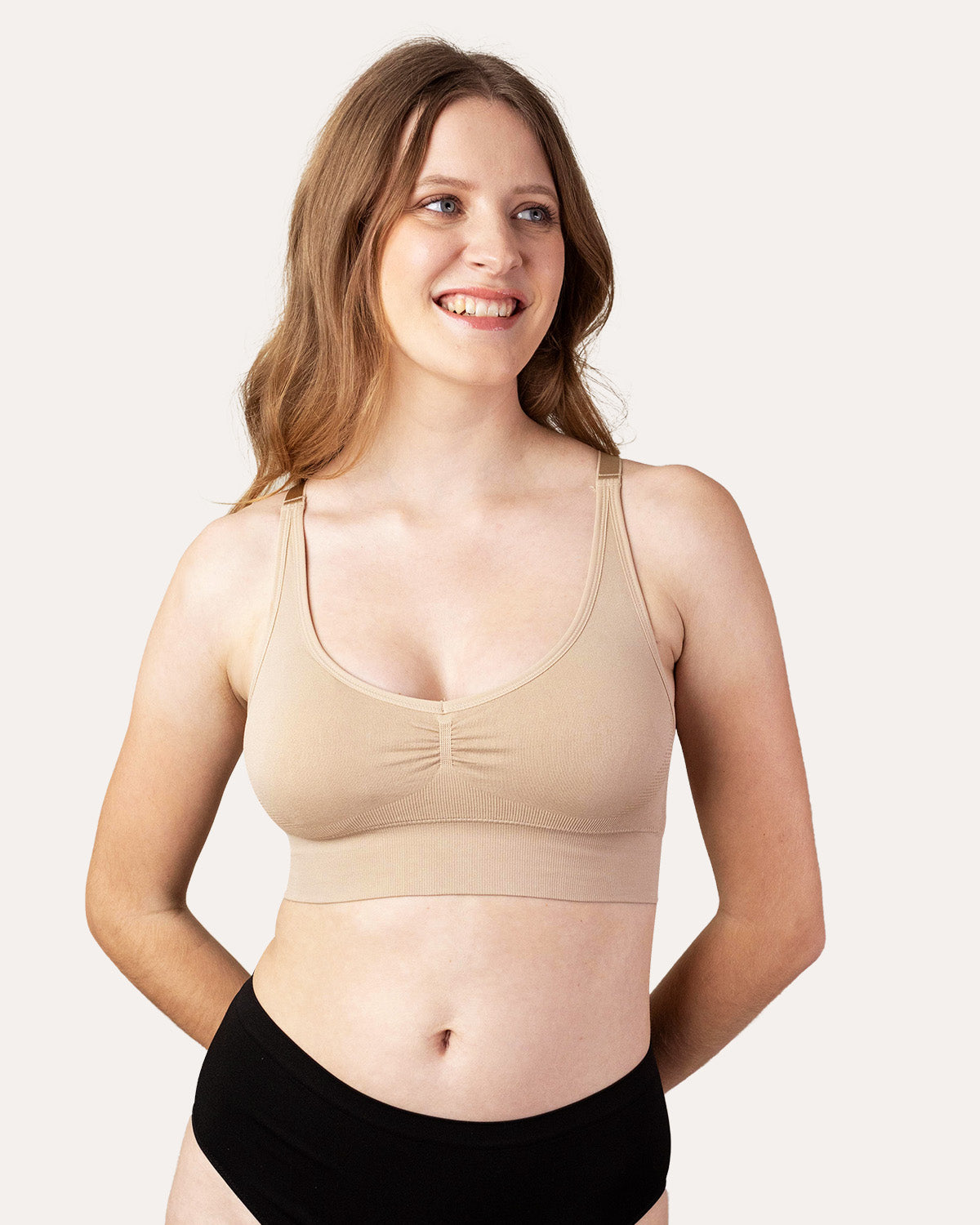Keywords to optimize the article for: how should a bra fit, how is a bra supposed to fit
How should a bra fit? The simple answer is that a bra should provide the support and comfort you need for your body shape and lifestyle. Because no two women are the same, and because every woman has different needs and expectations for their bras, a good bra needs to be adaptable enough to fit different body contours comfortably, at the same time as providing the support needed for exercise, work, or leisure.
In addition, bras don't just need to fit well, they also need to be attractive, with sufficient choice for every woman to find a design and color that flatters them.
Coobie designs premium bras that have been specifically developed to offer optimal comfort and support to women of all shapes and sizes.
Here we take a look at how a bra should fit at the front, sides, and back.
How Should a bra fit at the Front?
Regardless of the style of bra that you decide on, there are certain key characteristics that a well-fitting bra should have at the front.

Bra Bridge Positioning
The bra bridge is the part of the bra that separates the two cups. Its purpose is to separate the breasts, to prevent squashing and/or a build-up of perspiration. It also helps to anchor the bra snugly around the chest wall.
In a correctly fitting bra, the bra bridge should be in contact with the skin. The top of the bridge should be against the skin, without digging in (too small) or gaping (the bra is probably too large or the wrong shape for your contours). Avoid bras with a heavily seamed or stitched bra bridge, as this can be uncomfortable.
Bra Cups
The bra cups should gently support the breasts. The cup should be in contact with the breast at all points, but not dig in. If the top of the cup gapes or bags, you probably need a smaller size or a different style. Conversely, if the top of the cup digs in, or your breasts look as if they are spilling out of the cup, you probably need a larger size.
For optimal support, try a full-cup or full-size bra.
The Under-Chest Band
A correctly fitted under-chest band will lie flat against the body. If it's curled over or scrunched up, it's either not wide enough, or too small. A wider under-chest band is usually a more comfortable option for women with larger breasts, as there's more material to spread the breast weight evenly.
Under-Chest Bands should be made from a material that provides support, as well as one that wicks moisture away from the body. The area under the breasts is particularly prone to perspiration build-up, so materials that encourage dryness are usually best.
Under-Chest Bands should stay in place when you're exercising or performing everyday activities. If you find that your bra is riding up, you may need to either adjust the shoulder straps or opt for a smaller-sized bra that fits more snugly.
How Should a bra fit Correctly From the Side?
Do you dread side bulge? Unfortunately, if a bra is a wrong size or style, you could end up with unwanted bulges of flesh under the armpit, or a bra gape.
Ideally, the sideband of the bra should fit snugly against the body. It should be wide enough to take the weight of your breasts without digging into the sensitive skin under the arm.
Check that your breasts remain in a natural position on the front of your chest when you're wearing your bra - they shouldn't be pushed into the sideband, or conversely squished into the middle of your chest.
The sideband shouldn't ride up, or curl up, even during prolonged wear. If the sideband is riding up, the bra may be too small, or it may be that the band isn't supportive enough to suit your shape.
How is a bra Supposed to fit at the Back?
The back of the bra should provide a smooth line that ensures your underwear remains discreet, even when wearing T-shirts or stretchy tops. For many women, a bra with a deep backband provides optimal support without digging in. A deep backband reduces strain on the shoulders and helps to create a smoother line under clothing.
If you have a back-fastening bra, a larger number of eyelets ensures a more secure fit. Many women prefer a pull-on bra. Pull-on bras are easier to put on for women with limited arm mobility. They're also less likely to dig in than a back-fastening option.
Cup Sizes Don't Always Provide a Good Guide to Fit
Traditionally bras are sold using both the measurement under the bust and the cup size (determined around the fullest part of the breast) - a 36C, for example. The problem with this type of sizing is that it fails to take account of the way in which women's breasts vary in size, for all sorts of reasons. Not only do all women have one breast that's a slightly different size and shape to the other, but breasts also change shape and size depending on the time of the month, weight fluctuations, health issues, medication, and various other factors.
For a bra to fit correctly, it needs to be flexible enough to accommodate changing contours, at the same time as being firm enough to provide a suitable level of support. When you choose a scoop neck bra or halter criss-cross bralette, the sizing allows for a considerable variation in the wearer's shape and size. No matter what your contours are, a Cobbie bra will fit snugly yet comfortably.
If you're a woman who wants a versatile bra that will accommodate almost any body shape comfortably and supportively, the everyday bras, sports bras, and bandeau bras created by Cobbie are ideal.
Even after wearing a bra for years, many women are still asking themselves how should a bra fit, or feeling frustrated and disappointed by their inability to find a bra that gives them the comfort and support they deserve.
This is where a Cobbie bra comes into its own, providing support and comfort for breasts of all shapes and sizes. Available in a wide range of sizes, colors, and designs, Cobbie bras prioritize the wearer, providing a perfect fit for every woman.
Material Chosen for Comfort
Ideally, bra material needs to provide sufficient support to prevent unwanted (and uncomfortable) breast movement, at the same time as allowing enough flexibility to maintain comfort. Changes in weight, water retention, pregnancy, or breastfeeding can all temporarily alter breast shape - a material that has the right blend of support and flexibility will be able to accommodate these changes without the need to buy new bras. A nylon/spandex blend is usually the best solution. In addition, the material should be light and breathable, wicking moisture away from the skin to prevent any buildup of moisture that might lead to chafing or even a skin infection.
Designed for Comfort
There are several design features in a bra that can increase comfort, irrespective of the size needed. One of the most important comfort innovations in bra design is the creation of seamless bras. Wires, metal clasps, or stiff seams can all cut into the delicate breast tissue. Not only is this extremely uncomfortable, but pressure on breast tissue may also cause permanent damage. Underwires or seams may also cause chafing, leading to rawness or even complete skin breakdown. A seamless comfort bra, for example, gently cradles the breast, at the same time as providing sufficient support to ensure comfort whilst walking, bending, or performing everyday activities. If you've got damaged skin in the breast area, perhaps as a result of a chronic skin condition, or following surgery for cancer and/or a mastectomy, a seamless bra provides a comfortable, supportive option that won't chafe, dig, or pinch. Seamless bras aren't just a comfortable choice - when considering how is a bra supposed to fit, a key consideration is how it looks under clothes. If you're wearing a T-shirt, for example, you'll want a bra that fits smoothly, avoiding visible lines. Seamless bras provide a smooth contour, ensuring your underwear remains discreet under closer-fitting garments.
Removable Pads
Some women may choose to wear a bra with more padding when they're wearing a particular outfit. Others may prefer to wear padding all the time. Coobie bras are made with a pocket in each cup to hold a pad securely in place if required. If you don't want to wear a pad, they can be easily removed, leaving an empty pocket that doesn't alter the look or contours of your bra. If you do wish to wear pads, the pocket holds them securely in place. A pad can be used in one pocket only if required - women have one breast larger than the other for all sorts of reasons - a pad on the smaller side can provide a more natural look.
Wide Shoulder Straps
Narrow straps not only have a tendency to dig in, but they are also more likely to slide down a sloping shoulder or fail to hold a larger bust securely in place. We all know that the answer to how should a bra fit is that it should remain in place, providing the support and comfort you need. Wide shoulder straps provide secure, comfortable support for your bust. A bra with a wider strap often has a flatter line over the shoulder - perfect if you're wearing a T-shirt. Wider straps are less likely to drop down the shoulder, enabling wearers to pick a sleeveless top or dress without worrying about a stray strap dangling down inelegantly.
































Leave a comment
This site is protected by hCaptcha and the hCaptcha Privacy Policy and Terms of Service apply.